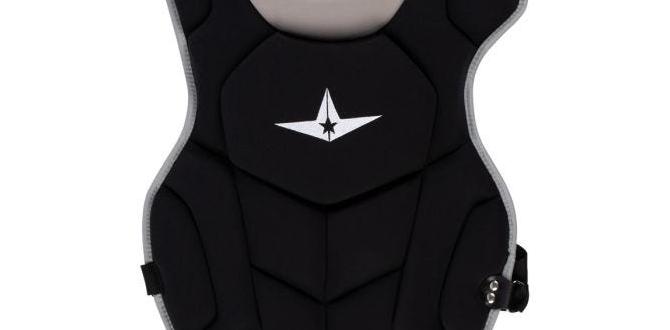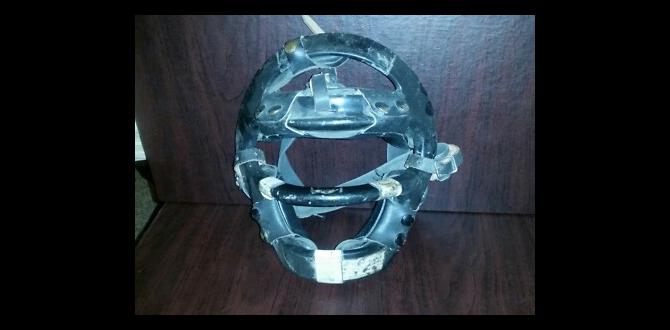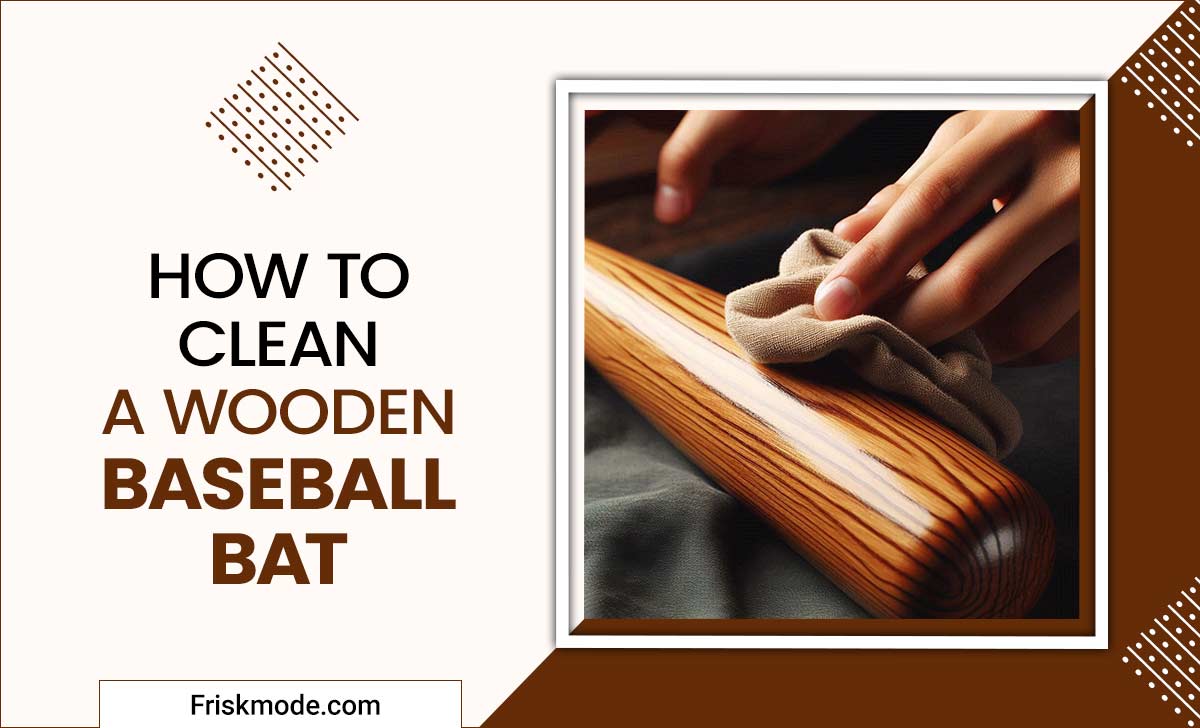Catchers throat guards are essential safety equipment for baseball players, protecting against errant pitches and foul balls. Top-rated models offer a balance of protection, comfort, and secure fit, ensuring you can focus on the game without worry.
Hey there, ballplayers and parents! Ever worried about that fast pitch coming in a little too high, or a unexpected foul ball heading your way? As a catcher, your position is crucial, but it also puts you in the line of fire. Protecting your throat shouldn’t be an afterthought; it’s a vital part of your gear. Many beginners feel a little overwhelmed by all the equipment options, and the throat guard is no exception. But don’t sweat it! We’re going to break down exactly why you need one, what makes a great throat guard, and how to pick the perfect one for you. It’s all about staying safe so you can play your best. Get ready to become a throat guard pro!
Why Every Catcher Needs a Throat Guard
Let’s face it, the catcher’s position is one of the toughest on the diamond. You’re squatting behind home plate, calling pitches, and absorbing impact game after game. While your helmet and facemask offer general head and face protection, a specific piece of equipment is designed to guard the most vulnerable spot: your throat. This isn’t just about comfort; it’s a critical safety measure.
An unprotected throat is susceptible to serious injury from several common baseball scenarios:
- Errant Pitches: Pitches that sail high can easily strike the throat, even with a catcher’s helmet on backwards if it’s not properly secured.
- Foul Tips: A ball hit directly back at the plate can come with incredible speed, often catching catchers off guard.
- Collisions: While less common, collisions at home plate can sometimes lead to accidental contact with the throat area.
- Wild Pitches or Passed Balls: In the chaos of a play at the plate, a stray ball can find its way to an unprotected area.
For younger players, this protection is even more crucial. Their bodies are still developing, and any serious injury can have a significant impact on their playing future. USA Baseball, the national governing body for amateur baseball, emphasizes the importance of proper protective equipment for all players, especially those in high-risk positions like catcher. You can find more information on their safety guidelines at USABaseball.com.
Understanding Catcher’s Throat Guards: What to Look For
Not all throat guards are created equal. When you’re looking for a “top-rated essential,” you want one that offers the best combination of protection, comfort, and durability. Here’s what to consider:
Protection Level & Material
The primary job of a throat guard is to absorb impact. Most high-quality throat guards are made from durable plastics, often reinforced with foam padding. Some may incorporate higher-tech materials for enhanced shock absorption. The key is that the material is tough enough to withstand a direct hit from a baseball without breaking or transferring excessive force to your neck.
Fit and Adjustability
A throat guard needs to stay in place, no matter how much you move. Look for guards that offer secure attachment mechanisms, usually involving straps or clips that connect to your catcher’s mask. Adjustable straps are a big plus, allowing you to customize the fit for maximum comfort and security. A guard that’s too loose can shift during play, leaving you exposed. A guard that’s too tight can be uncomfortable and restrict movement.
Comfort and Ergonomics
You’ll be wearing this for hours. A good throat guard should be designed to fit the natural curve of your neck and chin, minimizing pressure points. Some models have contoured shapes or added padding to enhance comfort. Consider the weight of the guard as well; a lighter option might be preferable for younger or less experienced players.
Durability and Longevity
Baseball gear takes a beating. Your throat guard needs to be robust enough to withstand everyday use, travel, and, of course, direct impacts. Check reviews for comments on how well the guard holds up over time. A quality guard is an investment that should last through multiple seasons.
Compatibility
Not all throat guards are designed to fit all catcher’s masks. Before you buy, check the product description and your mask specifications to ensure compatibility. Most popular brands offer guards designed to work with their own mask lines, but universal options are also available.
Top-Rated Catchers Throat Guards: A Closer Look
While specific models can change yearly with new releases and updates, certain brands consistently deliver high-quality catcher’s gear. Here are some of the most reputable options and what makes them stand out. Prices can vary, but top-rated gear is often an indicator of quality materials and design.
When evaluating top-rated options, we’re looking at brands known for their commitment to player safety and performance. These companies often invest heavily in research and development to create protective gear that meets the demands of the modern game.
Brand Spotlight: Rawlings
Rawlings is a giant in the baseball equipment world, and their catcher’s gear is no exception. They often focus on a balanced approach, ensuring their throat guards offer solid protection without sacrificing comfort or visibility.
- Features to expect: Durable polycarbonate construction, contoured fit, secure strap system, often designed to integrate seamlessly with their popular catcher’s helmets.
- Why it’s popular: Their gear is tried and tested at all levels of play, from youth leagues to professional ballparks. Players trust the Rawlings name.
Brand Spotlight: Wilson
Wilson is another iconic name that consistently produces reliable and high-performing equipment. Their catcher’s gear often emphasizes a lightweight feel and excellent protection for players who need to move quickly.
- Features to expect: Lightweight yet strong materials, ergonomic design for a snug fit, easy attachment to their mask systems.
- Why it’s popular: Wilson is known for innovation and player-centric design, meaning their gear often feels intuitive and comfortable to wear.
Brand Spotlight: All-Star
All-Star has carved out a strong reputation specifically for their exceptional catcher’s gear. They prioritize protection and often have features designed to maximize comfort during long games and practices.
- Features to expect: High-impact resistance, anatomical shape for a natural feel, robust fastening solutions, often available in a wide range of colors to match team uniforms.
- Why it’s popular: Many professional and collegiate catchers rely on All-Star gear, a testament to its quality and protective capabilities.
Brand Spotlight: Schutt
Schutt is a dominant force in protective sports equipment, particularly in football, and they bring that expertise to baseball. Their catcher’s gear often features advanced materials and designs focused on impact diffusion.
- Features to expect: Advanced impact-absorbing materials, secure and stable designs, often streamlined profiles to avoid interference.
- Why it’s popular: Schutt’s commitment to safety innovation translates into gear that offers superior protection.
When looking for “catchers throat guard top rated,” you’ll frequently see these brands mentioned. Always check the latest reviews for specific model recommendations, as designs evolve. For example, a guard might be rated highly for its “universal fit,” while another gets accolades for its “lightweight design.”
Choosing the Right Throat Guard for You: A Step-by-Step Guide
Picking out the perfect throat guard might seem straightforward, but taking a few moments to consider your specific needs can make a big difference in comfort and protection. Here’s how to make an informed decision:
Step 1: Identify Your Current Mask
This is the most crucial step. Your throat guard needs to attach securely to your existing catcher’s mask. Different masks have different attachment systems. Some guards are designed for specific mask models, while others claim to be “universal.” If you have a specific brand and model of catcher’s mask, look for a throat guard explicitly stated to be compatible with it. Taking a quick photo of your mask’s attachment points can help when shopping online or in-store.
Step 2: Consider Your League/Level of Play
For younger players in youth leagues or high school, a standard, durable plastic guard with good padding is usually sufficient. For more advanced players or those playing in highly competitive leagues where pitching speeds are higher, you might want to explore guards made with advanced materials that offer superior impact absorption. For instance, the NCAA rules and standards for baseball equipment are rigorous, and players often aim for gear that meets or exceeds these safety benchmarks.
Step 3: Prioritize Fit and Comfort
Even the most protective guard is useless if it’s uncomfortable and you don’t wear it properly.
- Try it on (if possible): If you’re in a store, attach the guard to your mask and put it on. See how it feels against your throat and jaw.
- Check adjustability: Look for guards with adjustable straps. This allows you to fine-tune the fit for your specific neck size and mask angle.
- Feel the padding: Is the padding sufficient? Does it dig into your skin? Good padding makes a huge difference during long games or practices.
A guard that feels too bulky or restrictive might make you hesitant to wear it consistently, undermining its protective purpose.
Step 4: Read Reviews and Compare Options
Once you have an idea of what you’re looking for, dive into online reviews. Search for “catchers throat guard top rated” and see what players are saying. Pay attention to comments about:
- Durability: How long does it last?
- Security of fit: Does it stay put during play?
- Comfort: Are there any pressure points or irritation?
- Ease of attachment: Is it simple to put on and take off?
- Protection: Have users experienced impacts, and how did the guard perform?
Look for recurring themes and common praises or complaints across different brands and models. Websites dedicated to baseball equipment reviews can also be a great resource.
Step 5: Think About Aesthetics (Optional)
While function is paramount, many players also like their gear to look good. Throat guards come in various colors, and some allow for customization. If matching your team’s colors is important to you, factor that in. However, never compromise on protection or fit for style.
Installation and Care: Keeping Your Guard in Top Shape
Installing a new throat guard is usually a breeze, and proper care will extend its lifespan. Here’s what you need to know:
Installation
Most throat guards attach to the underside of your catcher’s helmet’s facemask. The exact method varies, but it typically involves one or more of the following:
- Straps: The guard will have straps that loop around the bars of the facemask and secure with Velcro or buckles.
- Clips: Some guards use small clips that slot into specific points on the mask.
- Bolts/Screws: For a more permanent attachment (less common for standalone guards), some masks might have pre-drilled holes.
Always refer to the specific installation instructions that come with your throat guard. If you’re unsure, a quick YouTube search for your mask and guard model might provide helpful video tutorials.
Care and Maintenance
Keeping your throat guard clean and in good condition is simple:
- Wipe Down After Use: After every practice or game, use a damp cloth to wipe down the guard. This removes sweat, dirt, and grime that can degrade the material over time and cause odors.
- Mild Soap and Water: For tougher dirt, use a mild soap (like dish soap) and water solution. Avoid harsh chemicals or abrasive cleaners, as they can damage the plastic and padding.
- Air Dry: Never put your throat guard in a clothes dryer or expose it to extreme heat, as this can warp or melt the plastic. Always let it air dry completely before storing it.
- Inspect Regularly: Periodically check the guard for any signs of cracking, deep scratches, or wear on the straps. If you notice any damage, especially to the protective material itself, it’s time to replace it to ensure continued safety.
- Proper Storage: Store your catcher’s gear in a cool, dry place. Avoid leaving it in a hot car for extended periods. This helps preserve the integrity of the materials.
Proper care ensures your throat guard remains effective and comfortable for as long as possible. Consider it a small but vital part of your overall equipment maintenance routine.
The Psychology of Protection: Playing with Confidence
It might seem odd to talk about the mental side of wearing a throat guard, but it’s a real factor for many players, especially beginners. When you know you’re properly protected, you can play with more freedom and confidence. That nagging worry about getting hit in the throat can be distracting, taking your focus away from the game. A well-fitting, reliable throat guard can reduce that anxiety, allowing you to concentrate on calling pitches, blocking balls, and executing plays.
Think of it this way: professional athletes across all sports invest heavily in protective gear because it allows them to perform at their peak without being held back by fear of injury. While a throat guard is a relatively simple piece of equipment, its impact on your confidence can be significant. When you’re not constantly thinking, “What if I get hit there?”, you can react faster, communicate better, and make plays with more certainty. This mental edge is incredibly valuable on the baseball field.
Body checking for injuries is also a good practice. For advice on common baseball injuries and their prevention, the Stop Sports Injuries foundation offers excellent resources. They emphasize that proper gear is a cornerstone of injury prevention for young athletes.
Frequently Asked Questions (FAQ)
Q1: Do all catchers need a throat guard?
A1: While not always mandated by every league, it is highly recommended for all catchers, especially at younger ages, to wear a throat guard. It’s a crucial piece of safety equipment that protects a vulnerable area from serious injury.
Q2: How do I know if a throat guard will fit my mask?
A2: Check the product description for compatibility. Many brands list which of their mask models their throat guards are designed for. If buying a universal guard, look for features like adjustable straps and flexible attachment methods. If unsure, consult the seller or manufacturer.
Q3: Can I use a throat guard with any catcher’s mask?
A3: Most throat guards are designed to work with specific types or brands of catcher’s masks. While “universal” models exist, they might not offer the most secure or comfortable fit on every mask. It’s always best to verify compatibility.
Q4: How often should I replace my throat guard?
A4: A throat guard should be replaced if it shows signs of damage, such as cracks, deep gouges, or worn-out straps. Even without visible damage, if it has taken a significant impact, it’s wise to consider replacement, as the protective material could be compromised. For most players, this is usually every few seasons of regular use.
Q5: Are there different types of throat guards?
A5: Yes, while the basic function is the same, they can differ in material (standard plastic vs. advanced composites), padding, shape (contoured vs. flat), and attachment mechanisms. Some are designed specifically to fit certain helmet styles for maximum integration.
Q6: Will a throat guard make it hard to breathe or see?
A6: A properly fitted throat guard should not impede your breathing or significantly affect your vision. Top-rated models are designed with ergonomics in mind to provide protection without hindering movement or sightlines. If you experience issues, it might be improperly fitted or you might need to try a different model.
Q7: Where can I find the best deals on catcher’s throat guards?
A7: You can find good deals at large sporting goods retailers, both online and in-store. Keep an eye out for seasonal sales, end-of-season clearances, and discount codes offered by these retailers. Comparing prices across different stores is always a smart move.
Conclusion
As a catcher, your role is pivotal, and ensuring your safety should always be a top priority. A catcher’s throat guard is more than just an accessory; it’s a critical piece of protective equipment that shields you from potentially serious injuries. By understanding what to look for – from material and fit to durability and compatibility – you can confidently select a “top-rated essential” that meets your needs. Remember to consider brands known for their quality and to read reviews from fellow players. Proper installation and regular care will keep your guard performing its best. Don’t let





